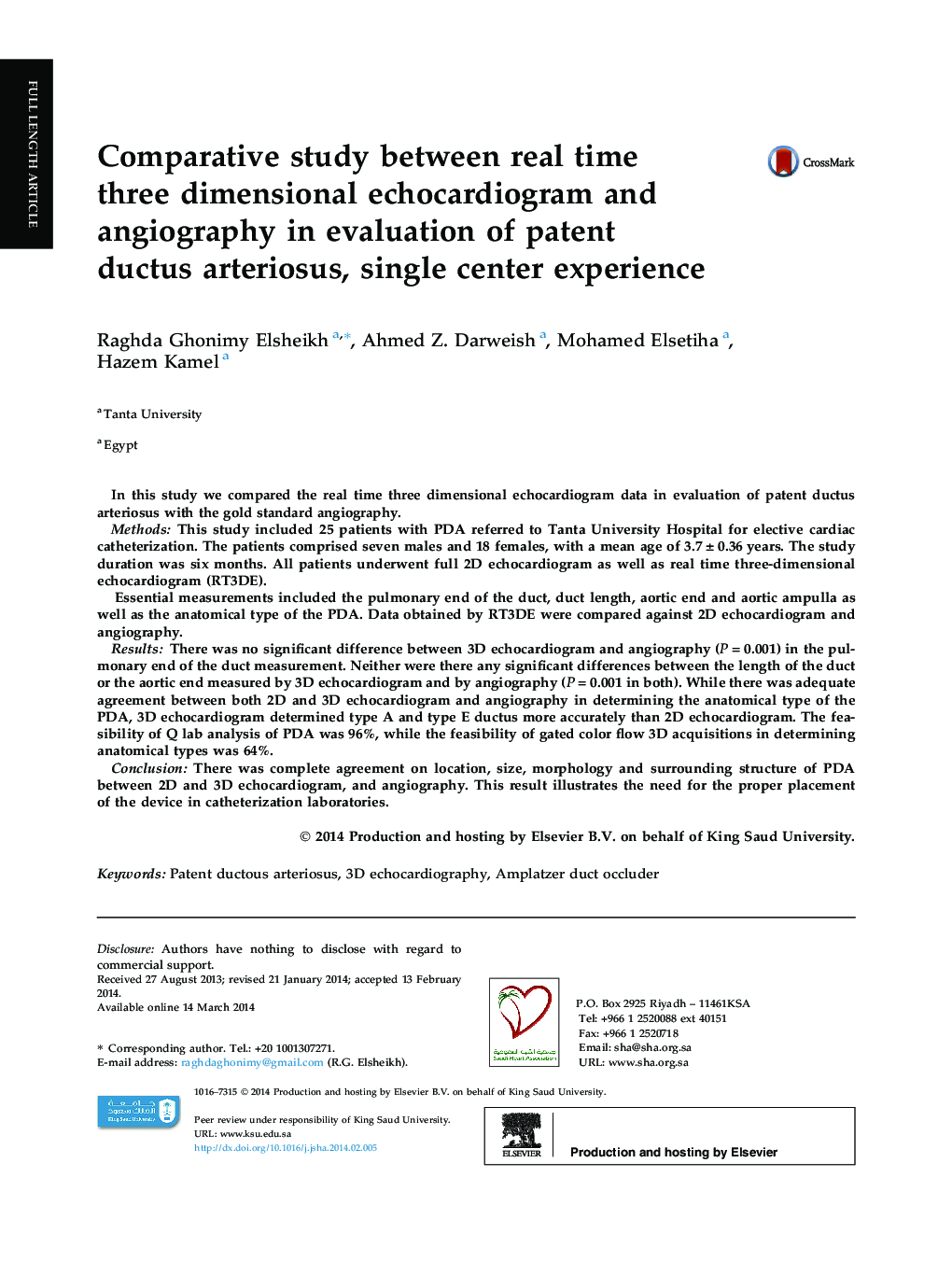| Article ID | Journal | Published Year | Pages | File Type |
|---|---|---|---|---|
| 2978167 | Journal of the Saudi Heart Association | 2014 | 8 Pages |
In this study we compared the real time three dimensional echocardiogram data in evaluation of patent ductus arteriosus with the gold standard angiography.MethodsThis study included 25 patients with PDA referred to Tanta University Hospital for elective cardiac catheterization. The patients comprised seven males and 18 females, with a mean age of 3.7 ± 0.36 years. The study duration was six months. All patients underwent full 2D echocardiogram as well as real time three-dimensional echocardiogram (RT3DE).Essential measurements included the pulmonary end of the duct, duct length, aortic end and aortic ampulla as well as the anatomical type of the PDA. Data obtained by RT3DE were compared against 2D echocardiogram and angiography.ResultsThere was no significant difference between 3D echocardiogram and angiography (P = 0.001) in the pulmonary end of the duct measurement. Neither were there any significant differences between the length of the duct or the aortic end measured by 3D echocardiogram and by angiography (P = 0.001 in both). While there was adequate agreement between both 2D and 3D echocardiogram and angiography in determining the anatomical type of the PDA, 3D echocardiogram determined type A and type E ductus more accurately than 2D echocardiogram. The feasibility of Q lab analysis of PDA was 96%, while the feasibility of gated color flow 3D acquisitions in determining anatomical types was 64%.ConclusionThere was complete agreement on location, size, morphology and surrounding structure of PDA between 2D and 3D echocardiogram, and angiography. This result illustrates the need for the proper placement of the device in catheterization laboratories.
